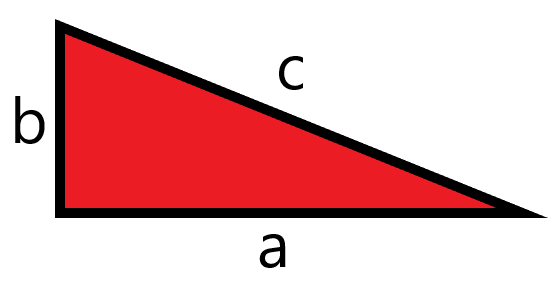Overview:
One of the many interesting properties of triangles is the Triangle-Sum Property. According to the Triangle-Sum property, the sum of the measures of the angles of any triangle is 180 degrees. The angles of the triangle form a straight angle.
What Is a Triangle?
A triangle is a polygon that has three sides that are made of line segments, and three corners where those line segments meet. Triangles can be classified according to the lengths of their sides. Equilateral triangles have all three sides the same length, isosceles triangles have two sides the same length, and scalene triangles have none of the sides the same length.
What about the Angles of a Triangle?
Triangles can also be classified by the measurements of their angles. Since equilateral triangles have all sides the same length, their interior angles also measure the same, 60°. Isosceles have two sides the same length and two angles the same measure. Scalene triangles do not have any angles the same. If each of the angles of a triangle measure less than 90°, then the triangle is called an acute triangle. Since an equilateral triangle has all three angles measuring 60°, and 60 is less than 90, all equilateral triangles are acute triangles. If a triangle has one angle that measures more than 90°, it is also called an obtuse triangle, because angles that measure more than 90° are obtuse. If there are no angles of the triangle that measure 90°, it is an oblique triangle.
What if One Angle of a Triangle Measures 90 Degrees?
Triangles that have one angle that measures 90° are called right triangles. They have many unique properties, including that their sides follow the Pythagorean Theorem: a2 + b2 = c2, where the longest side c is also called the hypotenuse. Some of the special types of right triangles are the triangle whose sides measure 3 units, 4 units, and 5 units, because 32 + 42 = 52, and the right isosceles triangle whose angles measure 90°, 45°, and 45°.
Why Does the Triangle-Sum Property Hold True?
The Triangle-Sum Property holds true for any type of triangle, whether equilateral, isosceles, or scalene. Suppose a line is drawn to ∆ABC through point A, so that the line is parallel to segment BC. It can be shown that all the lines form linear angles, so that the sum of those angles equals 180°. That means that if the measure of any two angles are known, the measure of the third angle of the triangle can be calculated. For example, suppose a scalene triangle has two angles with measurements of 100 and 37°. The third angle will measure 180° – 100° – 37°, or 43°.
Interested in geometry tutoring services? Learn more about how we are assisting thousands of students each academic year.
SchoolTutoring Academy is the premier educational services company for K-12 and college students. We offer tutoring programs for students in K-12, AP classes, and college. To learn more about how we help parents and students in Mankato, MN: visit Tutoring in Mankato, MN


